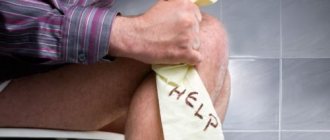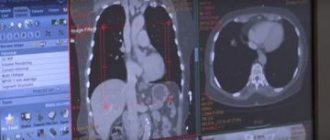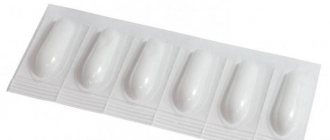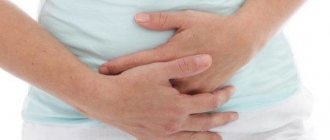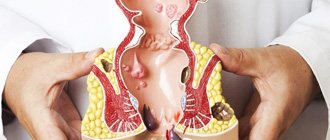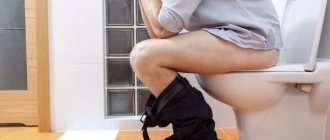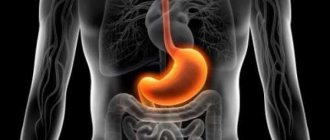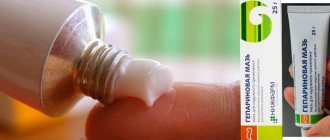Prolapse of hemorrhoids is a common symptom of complications in proctological diseases. What to do if a hemorrhoid prolapses?
Proctological disease requires immediate treatment and constant prevention
Inflammation of hemorrhoids and their protrusion outward are the main signs of hemorrhoids. They can be very painful, bleed, and sometimes this condition is unbearable to endure. If in the first stages of proctological disease the nodes can be adjusted independently, then in advanced cases this is difficult to do.
First, inflammation occurs, the internal nodes increase in size, then they exit the anal canal to the outside
First aid at home
If hemorrhoids come out, the patient cannot sit, lie, or stand normally, first of all it is necessary:
- Cold will relieve pain and reduce swelling.
Apply an ice pack wrapped in soft natural fabric to the sore spot. You cannot simply apply ice to the anus, as this can freeze the tissue. The procedure lasts a few seconds. - Take baths with cool water.
Lower the basin into water (temperature 18 degrees) for no more than 10 seconds. Sitz baths with potassium permanganate are very useful - Make baths from chamomile, calendula, oak bark. Sit in such a bath (water temperature 38 degrees) for up to 20 minutes. Herbs will soothe, reduce pain, and relax muscles.
- If a pharmacy is nearby, you can buy any anti-inflammatory ointment for hemorrhoids. It is necessary to lubricate the cones 3-4 times a day.
Causes
Childbirth, stress on the pelvis, gastrointestinal diseases - can lead to hemorrhoids
A blue lump near the anus does not form out of nothing. Usually its occurrence is due to several negative factors. Among the most common are:
- problems in the gastrointestinal tract, accompanied by frequent constipation or diarrhea;
- thinning of the walls of blood vessels, which is associated with impaired blood supply to the rectum or hormonal imbalance in the body;
- concomitant inflammatory bowel diseases;
- increased load on the pelvis as a result of pregnancy;
- excessive consumption of alcoholic beverages and junk food (spices, marinades, smoked foods);
- passive lifestyle, sedentary, inactive work.
What not to do when the venous plexus has prolapsed
Many people think that it is necessary to move. Of course, physical activity is a method of preventing hemorrhoids. But when the venous plexuses have already come out, it is better to limit them.
So, if the nodes fall out, the patient is prohibited from:
- Walk. The patient should lie on his back, this reduces the load on the muscles of the rectal area.
- Use toilet paper. Only washing with running water at room temperature is allowed.
- Wear tight underwear, tight pants, shorts, as they will put pressure on the pelvic organs.
- Lie on a soft surface. The bed should be quite hard.
- Sitting on the toilet for a long time. If you cannot have a bowel movement, you need to give a laxative enema.
Consequences of hemorrhoids
The main symptoms of hemorrhoids in the first stage (a feeling of tingling and heaviness in the lower rectum) cannot be ignored.
Any ignoring of the problem can lead to serious consequences . The same can be said about self-medication, which is usually wrong.
Possible consequences of hemorrhoids.
Serious consequences of untreated hemorrhoids are:
- Anemia from frequent blood loss . In this case, bleeding can be of varying intensity: if a few drops of blood are found on the toilet paper, there is no need to worry. But bleeding lasting more than half an hour requires urgent hospitalization.
- Vascular thrombosis is dangerous due to the death of rectal tissue . Seeing a doctor in a timely manner will help avoid surgery.
- Paraproctitis is a complication in the form of purulent inflammation of the intestinal tissue, which, if ignored, can end in the most tragic way. If there is any slightest purulent discharge, you should immediately consult a doctor.
- Transformation of inflamed cells into cancer cells – in advanced forms of hemorrhoids.
Video - proctologist about the first symptoms of hemorrhoids:
https://youtu.be/Pn_WMeWJk0M
Self-reduction of the node
Node dropout
If hemorrhoids come out, they need to be corrected. This procedure must initially be performed by a doctor. Independent actions in most cases lead to disastrous results.
During the consultation, the proctologist will tell you and teach you how to perform the procedure at home:
- Wash your hands and put on sterile medical gloves.
- Lubricate the node with heparin ointment or Troxevasin for pain relief.
- Take a comfortable position and slightly tilt your torso forward. Spread your buttocks, feel for the hemorrhoid and gently press it into the rectum with your index finger. Squeeze your buttocks.
- Lie on the bed and do not get up for 20-30 minutes.
When adjusting the nodes, do not use excessive force.
And if after two attempts it was not possible to return the prolapsed venous plexuses, stop performing the manipulation. Contact a proctologist or surgeon.
How to straighten a hemorrhoid yourself
Treatment with traditional methods
External hemorrhoids are difficult to treat with folk remedies. They can only be used as an auxiliary method along with traditional therapy. Among the popular folk remedies in the fight against hemorrhoidal cones are:
- decoctions and infusions of medicinal herbs (chamomile, peppercorns) - have anti-inflammatory and vascular strengthening effects;
- compresses made from sea buckthorn oil or propolis - disinfect the area where nodules form and relieve painful symptoms;
- baths with viburnum and onion peels - tone the veins and have a hemostatic effect.
How to treat
The most effective treatment for hemorrhoids is the advice of a good doctor. A thorough diagnosis allows the doctor to quickly eliminate the consequences and complications of the pathology.
At the initial stages of the disease, conservative therapy is used. This includes medication and physical therapy. Prescribed drugs for veins and blood vessels, creams and ointments, rectal suppositories, enemas, lotions, sitz baths, physiotherapy. In some cases, wearing compression garments can be very helpful.
If, after drug therapy, the nodes continue to fall out and sometimes cannot be reduced, surgical treatment is prescribed. The specialist chooses which type of operation to use individually. It depends on the severity, course and symptoms of the disease.
What are hemorrhoids and their varieties of black, white, blue
Among the signs of what kind of hemorrhoids there are, there are two main groups of pathology:
- by mechanism of occurrence - congenital or acquired
- by localization - external, internal or combined
The congenital form of hemorrhoids develops due to the genetic predisposition of the cavernous veins to dilation, that is, due to the weak tone of the vascular wall. In such cases, the disease can make itself felt both in childhood and adolescence, so timely diagnosis, treatment and prevention are decisive factors here that eliminate the risk of complications.
Acquired hemorrhoids occur as a result of a sedentary lifestyle, excessive physical activity, poor diet and disorders in the gastrointestinal tract. In turn, the occurrence of pathology has its own types of hemorrhoids - the primary and secondary stages of development. The primary acquisition of the disease is characterized by impaired blood flow in the pelvic vessels, and the secondary one is a subsequent complication of blood circulation in the portal vein system.
Prevention recommendations
When a specialist has reduced hemorrhoids, he must give recommendations to prevent relapses:
- Eliminate constipation. You can cope with fecal obstruction by consuming plant foods. The patient's diet should include vegetable salads, fresh fruits, fermented milk products, and oatmeal. A person must control the amount of liquid he drinks. Drink at least 2 liters of water per day. The liquid normalizes intestinal motility and relieves constipation.
- Strengthening the muscles of the anus. Squeeze and unclench the sphincter, do a “birch”, march, bend the pelvis, etc.
- Use of medicines. To prevent the problem from reoccurring, you need to regularly inject anti-inflammatory suppositories into the rectum. Be sure to lubricate the problem area with antihemorrhoidal ointments and take a course of phlebotropic medications.
- Physical activity. After the nodes have been adjusted, you can eventually begin physical therapy or sports.
A node comes out during pregnancy: what to do
Prolapse of the venous plexuses can occur in the early stages of pregnancy. But most often this pathological condition is detected in the last months. This is due to the fact that the enlarging uterus disrupts the blood supply to the vessels.
The lump may burst and then bleeding will begin.
If the nodes fall out, a pregnant woman should:
- Contact your doctor immediately. If a woman does not do this, she risks complications during and after childbirth.
- To eliminate pain, take medications that contain lidocaine or anesthesin (in the first trimester). If the disease takes you by surprise in the second trimester, then you can use the drug Hepatrombin G. And from the third trimester you can take Detralex tablets.
Any medications for hemorrhoids during pregnancy should be taken only as prescribed by a doctor.
How can a doctor help?
When the hemorrhoids come out, the proctologist can apply minimally invasive therapy methods to the pregnant woman:
- Sclerotherapy.
- Alloying with latex rings.
- Laser exposure.
- Cauterization using infrared radiation.
These methods are the most effective in treating prolapsed hemorrhoids in pregnant women. Therefore, at the first signs of deterioration in health, contact a specialist. This is the first priority for a pregnant woman.
Traditional treatment for hemorrhoid prolapse
What should a pregnant woman do before visiting a doctor?
To alleviate the condition, a pregnant woman must adhere to the following rules:
- Maintain hygiene of the anal area.
- Drink enough liquid.
- Try to move a little.
- Eat vegetables, fruits, oatmeal.
- Adjust the chair.
- Perform a cleansing enema.
- If necessary, take laxatives.
What are the dangers of prolapsed nodes during pregnancy?
If the nodes bleed, the woman becomes anemic. And a lack of hemoglobin can lead to delays in the growth and development of the fetus.
If an infection gets into the prolapsed node, a purulent-inflammatory process appears. It leads to the fact that toxins and harmful substances will be absorbed into the blood, reaching the fetus. The child will be infected while still in the womb.
Considering the consequences that external hemorrhoids can lead to, women should contact specialists at the first symptoms of the disease.
If the nodes were not corrected and labor began
Childbirth and hemorrhoids are not uncommon. More often, the disease appears after childbirth. If there is an external problem, giving birth to a child is not contraindicated, but pathology can complicate the birth process. Caesarean section is allowed only if there is heavy bleeding. In other cases, a woman should prepare for a painful and lengthy natural birth. After the baby is born, the fallen nodes are reset by obstetricians; sometimes the help of a proctologist may be required.
It is very important not to confuse thrombosis of external hemorrhoids with prolapse of internal nodes.
Types of hemorrhoids by type of location and form of the disease
Patients who are faced with the disease for the first time are wondering what kind of hemorrhoids are there? In numerous photographs of signs of pathology, you can see significant distinctive features between the subcutaneous and submucosal nodes. That is, for subcutaneous lumps in the perianal zone the official name is external or external hemorrhoids, and for submucosal ones - internal nodes. Depending on the stage of venous pathology, lumps can appear simultaneously both inside the lower intestine and outside the anal ring. Then it will already be classified as combined hemorrhoids.
Elena Malysheva: “In the 21st century, hemorrhoids are no longer a problem. Today, a normal one will cure him in a week.
Also in medicine, a distinction is made between chronic and acute pathology of cavernous veins.
In the chronic course of the disease, the patient periodically experiences an increased feeling of discomfort, minor bleeding occurs during the act of defecation, accompanied by the release of nodes to the outside. This is caused by constipation, prolonged sitting or standing, and excessive physical activity. As a rule, after stool regulation, diet and conservative treatment, the bumps return to their place, and a period of remission begins.
Acute hemorrhoids are characterized by the inability to reduce prolapsed nodes, severe pain, bleeding and thrombosis of dilated blood vessels. At this stage, self-medication is strictly contraindicated.
Black hemorrhoids
Most often, proctological pathology occurs as a chronic relapsing process. Patients report itching, pain and discomfort in the anal area. And, unfortunately, at the initial stage of chronic pathology of the cavernous veins, patients rarely seek help from a proctologist until it is complicated by thrombosis of the nodes, which thicken, enlarge and darken, turning into black hemorrhoids. The vessels that serve as a source of nutrition for the nodes become compressed and stop the blood supply. As a result, necrosis of the node develops, followed by rejection. And what is characteristic is that black bumps either do not cause painful sensations at all, or they are mildly expressed. The dead node is removed only by surgical excision in a hospital setting.
White hemorrhoids
White hemorrhoids are one of the stages of thrombosis severity. In addition to swelling of the anal area, itching and acute pain, which intensifies after stool, when moving or in a sitting position, very large external nodes covered with a layer of fibrin are observed. Fibrin is a plasma protein formed during blood clotting under the influence of thrombin. It is this that serves as the basis for thrombosis in the bloodstream. Insoluble protein clogs the lumen of the vessel and can envelop the outer lumps when bleeding, causing them to turn white. In this case, treatment tactics are aimed at eliminating swelling, relaxing the sphincter muscles, resolving blood clots and preventing their formation.
Blue hemorrhoids
Thrombosed blue external hemorrhoids (pictured) look quite scary, not to mention how frightening it is for the patient in reality. It is the nodes of this color that are extremely painful. Often the blue or purple bumps bleed heavily. For each stage of thrombosis, separate specific drug treatment is provided. It is complex action drugs that can cope with swelling, inflammation, relieve pain and heal cracks. Only after this is a decision made on more radical methods of eliminating thrombosed cavernous veins.
Elena Malysheva: “Because of hemorrhoids, many have lost faith in our medicine! But there is an effective remedy! It's simple. “
FAQ
- Question: “After giving birth, something bulges out of my anus, as if a tail has grown, or an intestine has protruded.
There is pain and itching all the time, what is it?” Answer: “In most cases, after childbirth, a hemorrhoidal anal fold of skin (fimbria) appears, which occurs after thrombosis of the external nodes.” - Question: “Something unusual came out of my butt and won’t retract back, I feel pain, will I live?”
Answer: “Don’t panic so much, contact a proctologist. This is a common manifestation of the acute phase of hemorrhoids. Most often it is thrombosis of the hemorrhoidal node.” - Question: “After every trip to the toilet to have a bowel movement, I get lumps or nodules.
After 5 to 10 minutes they disappear, as if they are being drawn in.” Answer: “This is a sign of internal hemorrhoids! If the nodes retract inward on their own, it means that the disease is just beginning to develop. A competent treatment regimen from an experienced proctologist can get rid of the problem in the shortest possible time.” - Question: “My knots come out with any strain.
Sometimes you just sneeze and feel that a problem has begun. Recently I picked up a bag of groceries and felt that they were bulging out. What will help me? Answer: “In such cases, surgery cannot be avoided. Now such operations are called minimally invasive procedures that are done in a few minutes, and the person continues to live a full life. But delaying treatment is fraught with serious complications.”
Important
Associated symptoms
The formation of lumps with external hemorrhoids is just one of the features of the disease. Usually the disease is accompanied by other unpleasant symptoms, such as:
- severe pain, especially during periods of exacerbation of the disease;
- itching, feeling of discomfort and the presence of a foreign object in the anal area;
- bleeding, which usually occurs when the integrity of the hemorrhoids is damaged, for example, after the release of solid stool due to constipation;
- presence of cracks in the anus.
At the initial stages of the disease, all these symptoms are mild, but over time they intensify significantly. If left untreated for a long time, hemorrhoidal cones become inflamed, as a result of which the patient’s body temperature may rise and weakness may appear.
